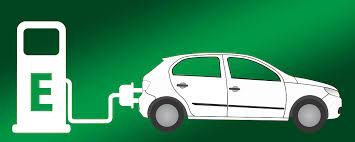Having bought a new car, for quite a hefty price tag, I am determined to earn back the value of the car over it’s lifetime! Since it was an EV, and I am able to claim part of my expenses as a tax deduction, I’m hoping that I will be able to recoup my upfront expenses through all the ongoing savings.
This post will be a living document that I will periodically update to track my progress!

Let’s start with the upfront costs:
Drive-away price: $85,000
Charger cable: $550
Ceramic coating: $1450
2024 Insurance: $2172
Total: $89,172
If I had purchased a new petrol car of a similar quality, the price would have been fairly similar. However I am not even going to include that here as the purpose of the tracker is to try and recoup my upfront costs. We’ll compare as if I just kept chugging along with the old car and had no upfront expenses!
Insurance would still be approximately the same for my petrol car ($2000 for 2024), so let’s add that onto the ‘savings’ side of the equation.
Petrol car savings: $2000
Of these upfront costs, I can claim approximately 50% as tax deductible business expense. However the purchase price has an upper claimable limit, and needs to be depreciated over several years (the COVID instant write off is no longer available). In total, I can claim:
$34,000 depreciation ($15,300 tax savings)
$2080 deductions ($935 tax savings)
Tax savings so far: $16,235
Charging expenses so far:
701km travelled, 157kWh of charging.
Most of it was solar, minimal charging from grid electricity.
Update: I’m going to ‘charge’ myself 11c/kWh for charging that I did on solar, as that’s energy that I’m not exporting back to the grid to offset my regular electricity bill.
Taking that into account, total charging expenses so far is $20.
A petrol car with a fairly generous estimate of 6L/100km would have used $84.12 in fuel so far (averaging fuel prices at $2/L, though it’s frequently higher!) Note that if I had kept my old car, the fuel economy was only about 9L/100km and would have cost me $127 in fuel already!
Petrol savings to date: $64.12
Total recouped: $18,281.28 out of $89,172 = 20.5%
A petrol car would need to be serviced every 6 months or every 10,000km, whichever is earlier. Tyres are recommended to be rotated every 10,000km, and replaced every 5 years or 40,000km.
Unlike a petrol car an EV does not need frequent servicing every few months as there are no oil changes and similar regular maintenance. The brake checks are also less frequent due to the regenerative breaking which means less wear and tear.
The recommended maintenance schedule for my EV:
– Air filter replacement every 2 years
– Brake fluid check every 4 years
– Rotate tyres every 10,000km – same
– Replace tyres every 6 years – same
I’ll be interested to see the comparison of maintenance costs over the years!
I’ve never heard of cars having to be serviced every 6 months. I’ve always been told it’s every 12 months/10K kms.
Anyway, interested to see how much you save in petrol over time. I’d love an EV, but I still adore my trusty 10 year old Golf, so I won’t be buying a new car anytime soon. 🙂
LikeLike
It’s what my mechanic always told me, not that I always obeyed! But I think that European cars need less frequent services than Japanese cars.
I’d had my trusty Corolla for 14 years and it served me well! I wouldn’t even call it a rust bucket now, it’s still a very reliable car… just with none of the fun safety features of new cars.
LikeLiked by 1 person